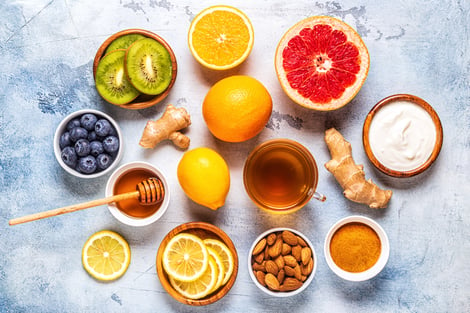 The holiday season is here. That means a lot of us will be traveling to see family and friends. You might be worried about not being able to keep up with your fitness routine while on the road. I am here to show you workouts that do not require a gym.
The holiday season is here. That means a lot of us will be traveling to see family and friends. You might be worried about not being able to keep up with your fitness routine while on the road. I am here to show you workouts that do not require a gym.
A Strength Workout and a Cardio Workout
I’ve listed two workouts below. One is a strength workout, and the other is a cardio workout that doesn’t involve going outside for a run. Both workouts take only 20 minutes, giving you plenty of time to enjoy time with your family and friends. The strength workout is an AMRAP style. This means you will set a timer for 20 minutes and get through as many rounds as you can in that time (take breaks as needed). The cardio workout is a circuit-style workout. You will perform each move for 45 seconds, then take a 15-second rest before going on to the next move.
To make things easier for you, I recommend downloading an app on your phone that allows you to set interval times. This way you don’t have to worry about continually watching the timer. I personally like to use the app called Interval Timer—HIIT workouts.
The Workouts
Here are the two workouts.
Bodyweight Strength Workout
20-minute AMRAP (as many rounds as possible)
- Squats (x10)
- Dips (x10)
- Push-ups (x10)
- Curtsy lunge with side kick (x10 each side)
- Plank (30 seconds)
- Marching Glute Bridge (x10 each leg)
Bodyweight Cardio Workout
Perform each move for 45 seconds, then rest 15 seconds. Repeat the circuit 4 times.
- Skaters
- Single-leg reach and knee drive
- 123 high knees
- Side shuffles
- 6 mountain climbers to a push-up
Remember, workouts don’t have to be an hour long to be “good” workouts. Getting any kind of movement for your body is great! Don’t be discouraged during this time if you miss a workout or two. Get movement in when you can, and enjoy the season!
This blog was written by Kaitlyn Pando, NIFS Group Fitness Coordinator. To learn more about the NIFS bloggers, click here.


 Did you know
Did you know  As the weather turns colder and we spend more time indoors, viruses will become more active among the population. Healthy eating can help you boost your immunity. Here are five of the top choices for fighting colds and flu with food.
As the weather turns colder and we spend more time indoors, viruses will become more active among the population. Healthy eating can help you boost your immunity. Here are five of the top choices for fighting colds and flu with food.